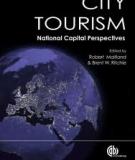Tài liệu Thư viện số
- Công nghệ thông tin (2019 )
- Điện tử viễn thông (1133 )
- Quản trị kinh doanh (1305 )
- Kế toán (1003 )
- Môi trường (968 )
- Du lịch (861 )
- Kiến trúc (424 )
- Xây dựng (1082 )
- Ngoại ngữ (302 )
- Y dược (1391 )
- Khoa học tự nhiên (874 )
- Khoa học xã hội (514 )
- Lý luận chính trị (573 )
- Sau đại học (243 )
- Tài liệu tham khảo khác (252 )
Danh mục TaiLieu.VN
- Mẫu Slide Powerpoint
- Luận Văn - Báo Cáo (344720)
- Kinh Doanh Marketing (65512)
- Kinh Tế - Quản Lý (48934)
- Tài Chính - Ngân Hàng (55898)
- Công Nghệ Thông Tin (142209)
- Tiếng Anh - Ngoại Ngữ (47066)
- Kỹ Thuật - Công Nghệ (134345)
- Khoa Học Tự Nhiên (107174)
- Khoa Học Xã Hội (82451)
- Văn Hoá - Nghệ Thuật (54408)
- Y Tế - Sức Khoẻ (173915)
- Nông - Lâm - Ngư (62504)
- Kỹ Năng Mềm (29016)
- Biểu Mẫu - Văn Bản (27610)
- Giải Trí - Thư Giãn (51994)
- Văn Bản Luật (198854)
- Tài Liệu Phổ Thông (402015)
- Trắc Nghiệm Online (213578)
- Trắc Nghiệm MBTI
- Trắc Nghiệm Holland
City tourism national capital Perspectives
Twenty years ago, Ashworth (1989) pointed to a double neglect of city tourism. Tourism researchers had neglected the city, though so much tourism took place there, and urbanists had neglected tourism, despite its rapid growth and increasing influence on cities. Much has changed. For developers and policy makers, city tourism is now mainstream, and no longer associated just with resorts and historic cities. Former industrial cities have taken to tourism as an important part of the way they must make their living in a changing world, and national capitals have given more attention to tourism. As is shown elsewhere in the book, national capitals have always had special qualities that attract visitors, but their attitudes towards tourism have at times been ambivalent. For example, London has long been a leading – on some measures, the leading – national capital destination, but until the 1980s city policy makers saw tourism primarily as a problem to be managed, while admitting some benefits, mainly to unskilled workers (e.g. Lipscomb and Weatheritt, 1977). For their part, tourists have shown an increasing desire to visit cities, as global tourism numbers have grown and trips have multiplied. Now as Fainstein et al. (2003, p. 8) say, ‘virtually every city sees a tourism possibility and has taken steps to
encourage it’.
encourage it’.
Từ khóa: City tourism national capital Perspectives, city tourism, historic cities, industrial cities, global tourism, du lịch thành phố
297 p trinh 26/09/2012 228 6


